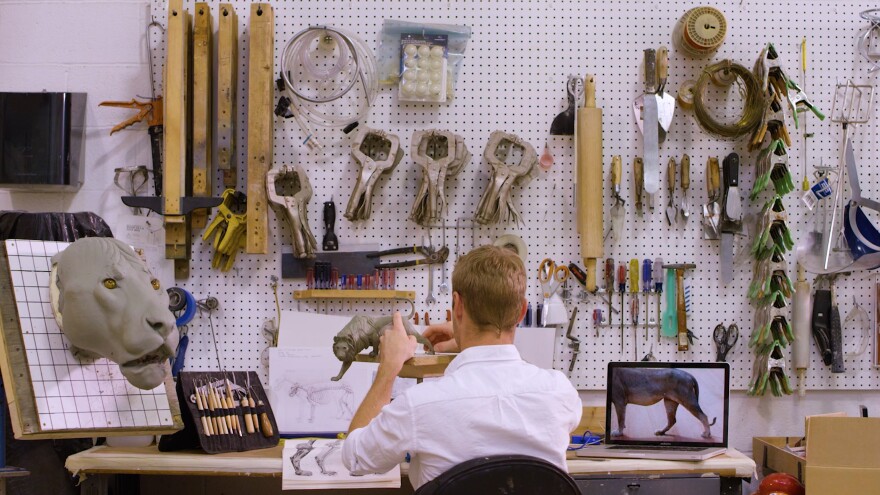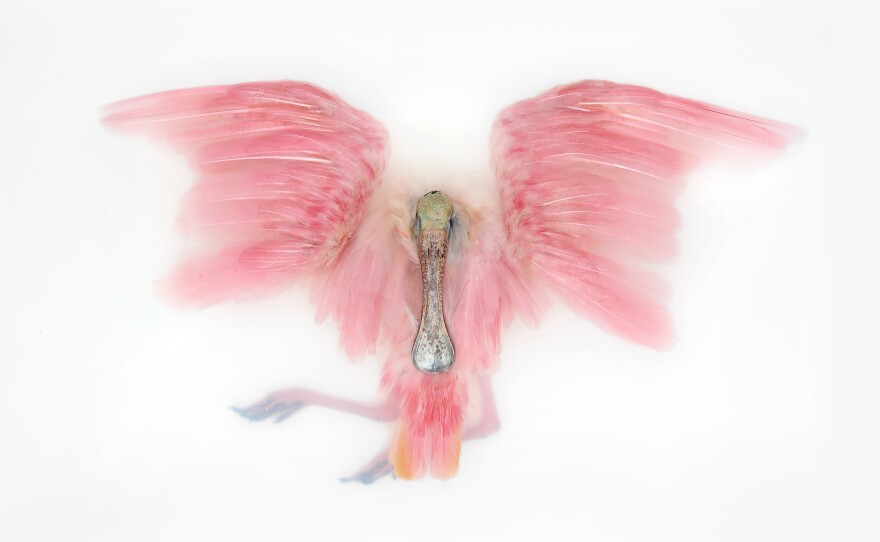Taxidermists can have a hard time finding a date. Stereotypes and disgust surround the practice, however Asheville film director Erin Derham doesn’t think that judgment is deserved. True, she was repulsed when a colleague initially pitched the idea of a documentary about taxidermy (Derham is vegan), but her reaction soon transformed into a deep respect for the field and its practitioners. Her journey led her down the rabbit hole to animal rescues and safaris where she discovered the significance of taxidermy in conservation efforts.

Chemistry and biology are the foundations of taxidermy, but art enlivens the field. Anatomical sculpture is, quite literally, the core of the practice. In many cases, creativity goes beyond lifelike reproduction. In the Victorian era, stuffed animals were anthropomorphized into comical tableaus set in classrooms or kitchens. Contemporary artists are pushing traditional restrictions through fashion, photography, as well as anatomical remixing, called rogue taxidermy.

While pointing out some of these more extraordinary approaches, Derham keeps the spotlight on the innovation and subtle artistry of the traditional practice. The featured cast of taxidermists spans the globe from Zimbabwe to Ohio. They reflect on breaking the stereotypes of their work while collectively reveling in the obsession of evoking life from death.
Interview Highlights:
On choosing taxidermy as the focus of the documentary:
We just wanted to do an environmental documentary, something that got people excited about nature. And [my colleague Rachel Price] suggested taxidermy, and I was really disgusted. I thought of deer heads on the wall, I thought of hunting, I thought of dark gray images.
As soon as I spent a weekend researching, I saw an art form, I saw a lot of history, I saw a lot of passion about nature. But it was hard explaining to people what it was going to be about. They expected that I was going to make this really gory, dark movie. I said no, what's in my head is this beautiful, bright, vibrant art piece. And it really took a starting to film before anybody would sign on to work on it with me.
On first impressions with taxidermists:
I was a bio major for two years, so I arrogantly thought that I knew enough to understand what they were doing. And I was just so humbled watching them work. Some of these people will have zoology degrees, they have bio degrees, PhDs; some of them are completely self taught. But they all have to have a serious academic understanding of anatomy, biology and chemistry.
Some taxidermists that don't know this stuff can buy a form online and just kind of play around and work on their piece. But the people we filmed ... these are the people at the top level that are trying to take taxidermy to the next level. Both to continue the art, but also to continue scientific research and, most importantly, to bring people back to understanding nature and appreciating it more.
On changing her relationship with death:
That's honestly one of the most beautiful gifts I've ever gotten from making a film. I used to deal with a lot of anxiety, a lot of stress. And around the exact same summer I started working on this project, I also started backpacking and putting myself in semi-dangerous situations. I was terrified the whole time that I was going to get hurt.
What the taxidermists really instill — just by doing their work — is that death is just as much a part of life as birth is and that it shouldn't be feared. And it's not a scary thing. Yes, it's sad when someone you love isn't here anymore, that's a given. But death in and of itself shouldn't be something that you're scared of. And it just completely removed this deep-set anxiety that I've had my whole life about getting hurt. And now I backpack, climb mountains and do things that I never would have done.




